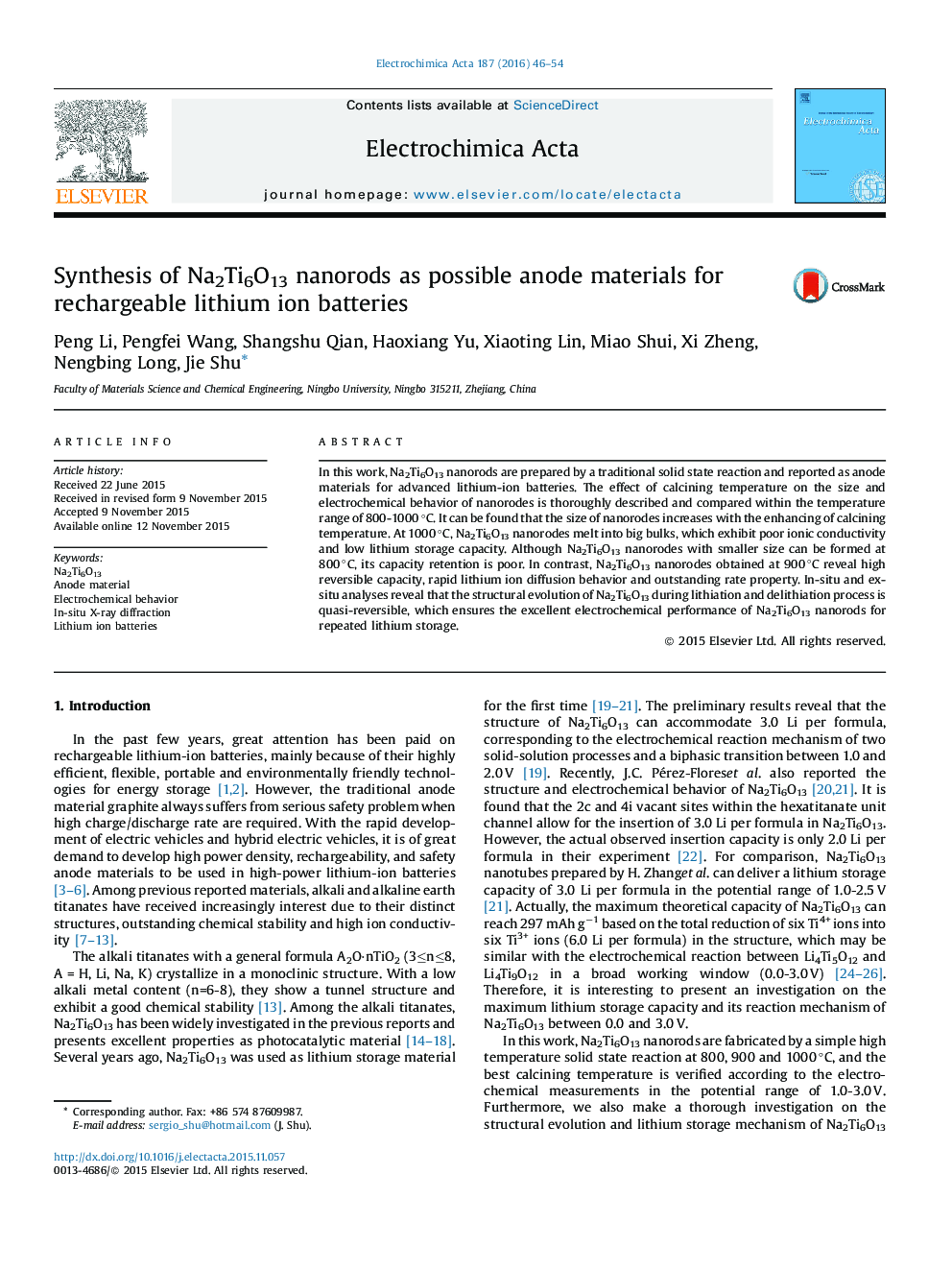| Article ID | Journal | Published Year | Pages | File Type |
|---|---|---|---|---|
| 183242 | Electrochimica Acta | 2016 | 9 Pages |
•Na2Ti6O13 nanorods are prepared by a traditional solid state reaction.•Na2Ti6O13 nanorods show the potential as lithium storage materials.•Na2Ti6O13 nanorods reveal slight volume expansion during cycles.•In-situ XRD proves the structural and cyclic stability of Na2Ti6O13 nanorods.
In this work, Na2Ti6O13 nanorods are prepared by a traditional solid state reaction and reported as anode materials for advanced lithium-ion batteries. The effect of calcining temperature on the size and electrochemical behavior of nanorodes is thoroughly described and compared within the temperature range of 800-1000 °C. It can be found that the size of nanorodes increases with the enhancing of calcining temperature. At 1000 °C, Na2Ti6O13 nanorodes melt into big bulks, which exhibit poor ionic conductivity and low lithium storage capacity. Although Na2Ti6O13 nanorodes with smaller size can be formed at 800 °C, its capacity retention is poor. In contrast, Na2Ti6O13 nanorodes obtained at 900 °C reveal high reversible capacity, rapid lithium ion diffusion behavior and outstanding rate property. In-situ and ex-situ analyses reveal that the structural evolution of Na2Ti6O13 during lithiation and delithiation process is quasi-reversible, which ensures the excellent electrochemical performance of Na2Ti6O13 nanorods for repeated lithium storage.
Graphical abstractFigure optionsDownload full-size imageDownload as PowerPoint slide
